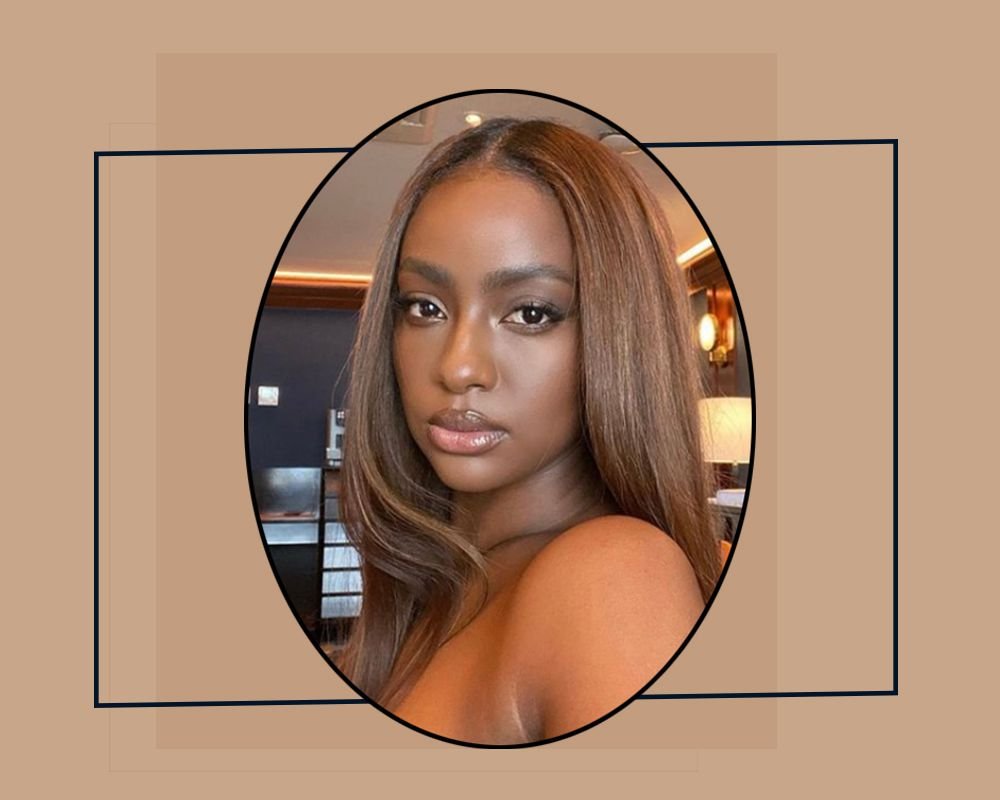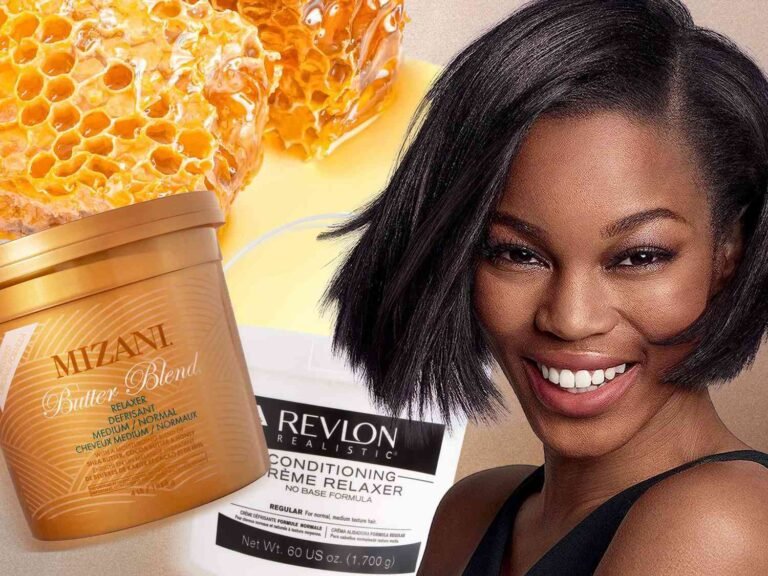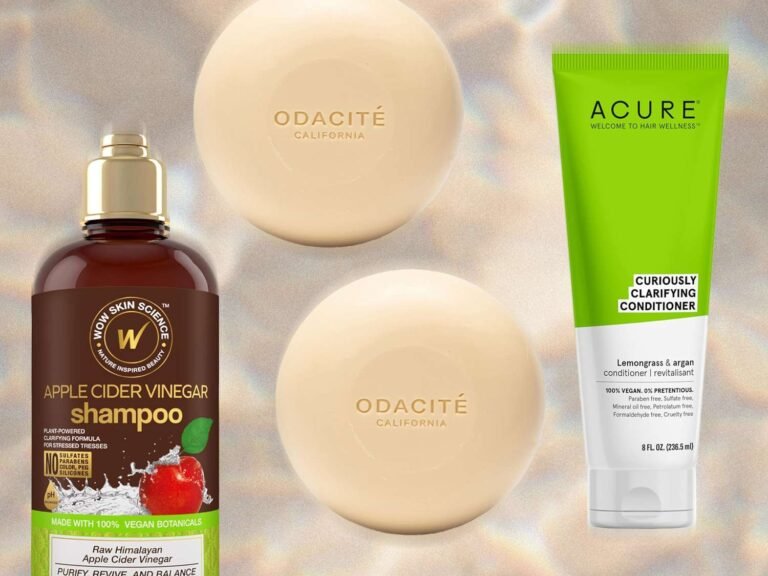How to Grow Out Your Natural Hair Color, According to Experts: Ultimate Guide
Growing out your natural hair color requires having your colorist gloss your hair back to the roots for a seamless blend as it grows. This method is recommended by experts for a seamless transition.
To grow out your natural hair color effectively, patience and professional guidance are key. Consider shortening your hair, match dye to your natural hue, or opt for highlighting to soften the transition line. Using the right hair care products to support your hair color transition can also be beneficial.
By following expert advice and incorporating these strategies, you can successfully embrace your natural hair color.
Understanding Your Natural Hair Color
To grow out your natural hair color, experts recommend having your colorist gloss your hair back to the natural level of the roots. This allows the natural root to blend as it grows, giving you a seamless transition from dyed hair to your natural color.
Identifying Your Natural Hair Color
Before you embark on a journey to grow out your natural hair color, it’s essential to identify what exactly your natural hair color is. Knowing your starting point is key to understanding the process and setting realistic expectations.
Identifying your natural hair color involves closely examining your hair’s current shade and determining its undertones. Here’s a simple guide to help you:
- Look closely at the roots of your hair. This is the area where your natural hair color is most visible.
- Observe the shade and intensity of your hair color. Is it light blonde, dark brown, or somewhere in between?
- Take note of any natural highlights or variations in color that may be present. These can provide valuable insights into your natural hair color.
- Consider any changes in your hair color over time. Has it darkened or lightened due to sun exposure or chemical treatments?
By carefully observing these factors, you’ll gain a better understanding of your natural hair color, allowing you to make informed decisions about growing it out.
Understanding Hair Color Terminology
When it comes to understanding and discussing hair color, it’s essential to be familiar with the terminology used by experts. Here are a few key terms to help you navigate the world of natural hair color:
| Term | Definition |
|---|---|
| Base Color | The dominant pigmentation of your natural hair, which provides the foundation for other color treatments. |
| Hue | The specific shade or color family of your hair, such as blonde, brunette, red, or black. |
| Level | An indication of the lightness or darkness of your hair color, ranging from 1 (black) to 10 (lightest blonde). |
| Undertone | The subtle hues that appear beneath your natural hair color, such as warm (red or gold) or cool (ash or violet). |
By familiarizing yourself with these terms, you’ll be equipped to communicate effectively with your colorist and better understand their recommendations for growing out your natural hair color.
Transitioning Back To Natural Hair Color
Transitioning back to your natural hair color can be both a liberating and challenging experience. Whether you’re tired of the maintenance that comes with artificial color or are simply ready to embrace your roots, creating an effective plan is essential for a successful transition. In this section, we’ll discuss how to create a seamless plan for transitioning back to your natural hair color, considerations for a shorter cut, and the importance of matching your natural hue for a beautiful, harmonious finish.
Creating A Transition Plan
- Consult a professional to create a personalized plan tailored to your unique hair type and color history
- Consider using semi-permanent or demi-permanent hair color to gradually blend the roots with the rest of your hair
- Incorporate nourishing hair treatments to maintain the health and integrity of your hair during the transition
Considerations For A Shorter Cut
- Opting for a shorter hairstyle can expedite the process of growing out your natural color
- A shorter cut can minimize the stark contrast between your natural roots and colored length, resulting in a smoother transition
Matching Your Natural Hue
- Work with a professional colorist to identify the exact shade of your natural hair color
- Choose a hair dye that closely matches your natural hue to create a seamless blend
- Consider incorporating highlights or lowlights that mimic your natural color variation to achieve a more organic look
Methods For Growing Out Natural Hair Color
To effortlessly grow out your natural hair color, experts recommend a gradual approach. Utilize gloss treatments to blend roots with natural color for a seamless transition. Regular trims also aid in managing the growing out process effectively.
Growing Out Hair Naturally
Growing out your natural hair color can be a daunting process, but rest assured, there are methods that can help you achieve your desired results. One of the most effective ways is to simply let your hair grow naturally. This method is not only low maintenance but also the least damaging for your hair. By allowing your hair to grow without any additional treatments or harsh chemicals, you give it the opportunity to regain its natural shade.
Strategic Hair Dyeing Techniques
If you’re not ready to fully commit to growing out your natural hair color, strategic hair dyeing techniques can be a great option. This involves dyeing only certain sections of your hair, such as the roots or the ends, to create a gradual transition. For example, you can choose a shade that closely resembles your natural hair color and apply it to the roots, while leaving the rest of your hair untouched. This will help to blend the new growth with the old color, creating a more seamless and natural look.
Benefits Of A Short Hairstyle
An alternative method for growing out your natural hair color is to opt for a shorter cut. By trimming off the dyed or colored parts of your hair, you remove the need for extensive touch-ups and allow your natural color to take center stage. Not only does a shorter hairstyle make the growing-out process easier, but it also offers a fresh and stylish look. Additionally, maintaining shorter hair can promote overall hair health, making it easier for your natural color to shine through.

Credit: www.cosmopolitan.com
Improving Natural Hair Color
When it comes to improving your natural hair color, there are several expert-recommended techniques that can help you achieve the desired results. From shine services to deep-conditioning treatments and blended highlights, these methods can enhance the vibrancy and beauty of your natural hair color.
Shine Services For Enhancing Hair Color
Shine services, also known as gloss or glaze treatments, are salon treatments that can work wonders for all hair colors and textures. A shine service can boost the shine and radiance of your natural hair color, making it appear more vibrant and healthy. It involves applying a specially formulated color-enhancing product to your hair, which not only adds shine but also helps to seal the cuticles, reducing frizz and improving overall manageability.
Deep-conditioning Treatments
Deep-conditioning treatments are another excellent way to improve your natural hair color. These treatments provide intense hydration and nourishment to your hair, helping to restore moisture, softness, and shine. They can also help to repair any damage caused by coloring or heat styling, leaving your hair looking healthier and more vibrant. Regular deep-conditioning treatments can make a noticeable difference in the appearance and texture of your natural hair color.
Blended Highlights
Blended highlights are a great option for those who want to enhance their natural hair color without making a drastic change. This technique involves strategically placing highlights throughout your hair, focusing on areas where your natural color may appear dull or lackluster. The highlights are blended seamlessly with your natural hair color, creating dimension and depth. Blended highlights can add a beautiful touch to your natural hair color, making it look more vibrant and dynamic.
In conclusion, there are various ways to improve your natural hair color, including shine services, deep-conditioning treatments, and blended highlights. These expert-recommended techniques can enhance the vibrancy and radiance of your natural hair, giving you the beautiful, healthy-looking locks you desire.
Expert Tips For Growing Out Natural Hair Color
When it comes to growing out your natural hair color, it’s essential to seek guidance from industry experts. Here are insights from renowned celebrity colorist Cassondra Kaeding, along with tips and strategies from industry professionals that will help you achieve a seamless transition to your natural hair color.
Advice From Celebrity Colorist Cassondra Kaeding
Cassondra Kaeding, a highly sought-after celebrity colorist, emphasizes the significance of using hair gloss to seamlessly blend your natural roots with any existing color-treated hair. Glossing your hair back to its natural level of roots helps maintain a cohesive and polished look during the transitioning process.
Insights From Industry Experts
- Consult a professional stylist to create a personalized plan for returning to your natural hair color.
- Consider opting for a shorter haircut to expedite the transition and minimize the stark contrast between your natural roots and colored hair.
- Match your dye to your natural hue to ensure a harmonious and natural-looking color transition.
- Utilize highlighting or lowlighting techniques to blur the line of growth and seamlessly blend your natural roots with the colored sections of your hair.
- Support your hair color transition with nourishing, color-safe products tailored to your specific needs and concerns.

Credit: www.pinterest.com
Challenges And Solutions
For those seeking to embrace their natural hair color, experts recommend a gradual approach. Transitioning from highlights to natural hues can be achieved by glossing the hair back to its roots. Patience and professional care are key to successfully growing out your natural hair color as it blends seamlessly with your existing shade.
Dealing With The Transitional Phase
Transitioning to your natural hair color can be challenging, especially during the phase where your roots start to show. To seamlessly navigate this period, consider:
- Regular trims: Keeping your hair trimmed can help manage the demarcation line between your natural color and dyed hair.
- Color blending: Ask your colorist to blend the new growth with your existing color to create a more gradual transition.
- Temporary solutions: Use hair accessories like headbands or scarves to camouflage the color difference.
Managing Different Hair Textures During The Process
Each person may have multiple hair textures during the transitioning process. Here are solutions to handle this variability:
- Hydration: Regular deep conditioning treatments can help maintain moisture and manage frizz.
- Adjusting styling techniques: Experiment with various styling methods to find what works best for your changing hair textures.
- Consulting a professional: Seek advice from a stylist for personalized recommendations based on your hair texture changes.
Maintaining Natural Hair Color
Maintaining your natural hair color requires patience and dedication. Professional colorists recommend using gloss treatments to blend the natural roots as your hair grows out, allowing for a seamless transition. Additionally, deep conditioning and blended highlights can enhance your natural hair color for a healthy and vibrant look.
Hair Care Products For Natural Hair
To maintain your natural hair color, choose sulfate-free shampoos and conditioners. Look for products with natural ingredients like coconut oil or argan oil for added moisture.Regular Hair Trimming For Healthy Growth
Trim your natural hair regularly to prevent split ends and promote healthy growth. Stick to a consistent trimming schedule every 8-12 weeks.Ensuring Each Heading Adheres To Html Syntax
HTML syntax is crucial for proper structuring and formatting of your content. Ensure that each H3 heading is enclosed within appropriate tags for search engine visibility. Overall, maintaining your natural hair color requires consistent care with the right products and regular trims.:max_bytes(150000):strip_icc()/How-to-make-hair-grow-faster-naturally-4686865_800x1000_rev-90de8a905ee540e7b75bbafc1519fe05.jpg)
Credit: www.byrdie.com
Frequently Asked Questions
What Is The Best Way To Grow Out Your Natural Hair Color?
To grow out your natural hair color, have your colorist gloss your hair back to the natural level of the roots. This allows the natural root to blend as it grows. Avoid highlighting or lowlighting to blur the line of growth.
Be patient and let your hair grow out naturally.
What Is The Best Way To Transition To Natural Hair Color?
To transition to natural hair color, create a plan with a professional. Consider a shorter cut and dye to match your natural hue. Highlight or lowlight to blur the line of growth and use products that support the transition. Growing out your hair is the most effective and least damaging way.
How To Get Your Natural Hair Color Back Naturally?
To naturally get your hair color back, grow out your hair, consider dyeing, or opt for a short hairstyle. Also, shine services, deep-conditioning treatments, and blended highlights can enhance your natural hair color. Consulting a professional for guidance is recommended.
How Can I Improve My Natural Hair Color?
To enhance your natural hair color, try shine services, deep-conditioning treatments, and blended highlights for a vibrant look.
Conclusion
To gracefully transition to your natural hair color, follow these expert tips for a long-lasting and seamless transformation. Embrace the journey by staying patient and consulting with a professional colorist. Consider a shorter cut or opt for dye and highlights to blend and support your natural hue.
Taking care of your hair throughout the process is key to achieving a healthy and beautiful end result.








